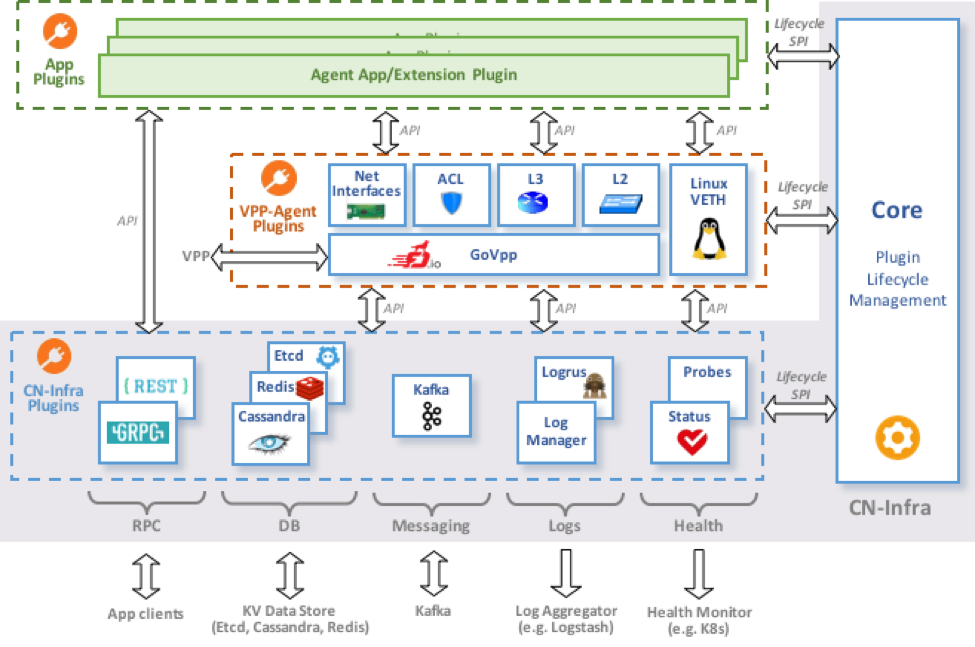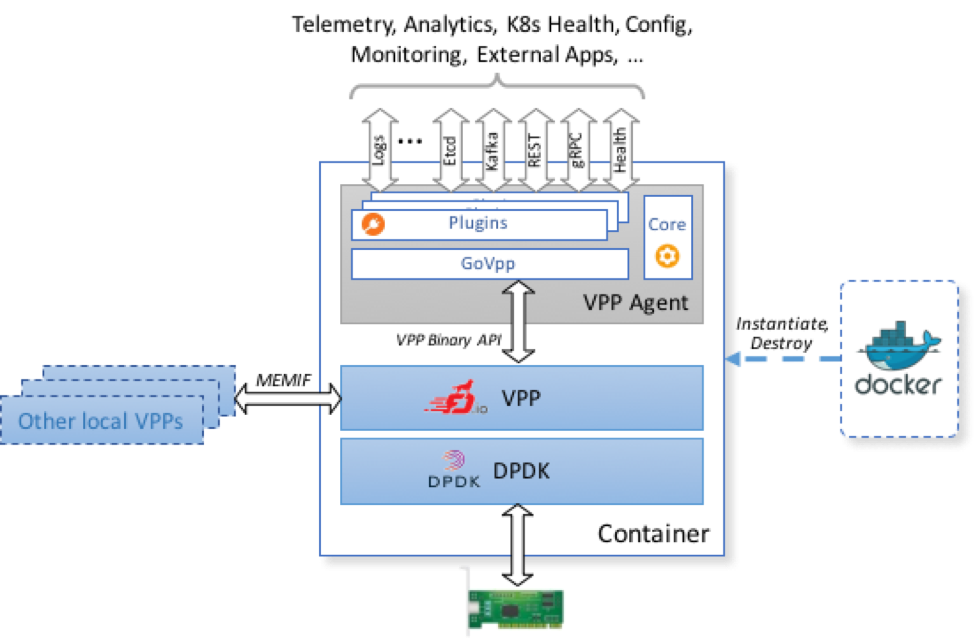The VPP Agent is a Go implementation of a control/management plane for VPP based cloud-native Virtual Network Functions (VNFs). The VPP Agent is built on top of CN Infra, a framework for developing cloud-native VNFs (CNFs).
The VPP Agent can be used as-is as a management/control agent for VNFs based on off-the-shelf VPP (e.g. a VPP-based vswitch), or as a framework for developing management agents for VPP-based CNFs. An example of a custom VPP-based CNF is the Contiv-VPP vswitch.
| Release | Release Date | Info |
|---|---|---|
 |
 |
latest release |
 |
 |
last release/pre-release |
Have a look at the release notes for a complete list of changes.
| Branch | Last Commit | Info |
|---|---|---|
 |
 |
has moved to v2, introducing several breaking changes |
 |
 |
will be used for all the future development |
Note: The branch pantheon-dev has been deprecated (v1).
| Image | Image Size/Layers | Info |
|---|---|---|
 |
  |
minimal image for production |
 |
  |
image prepared for developers |
The image tag latest is built from master branch and dev tag is built from dev branch.
For a quick start with the VPP Agent, you can use the pre-built Docker images on DockerHub that contain the VPP Agent and VPP: ligato/vpp-agent (or for ARM64: ligato/vpp-agent-arm64).
-
Start ETCD on your host (e.g. in Docker as described here).
Note: for ARM64 see the information for etcd.
-
Run VPP + VPP Agent in a Docker container:
docker run -it --rm --name vpp --privileged ligato/vpp-agent
- Manage VPP agent using agentctl:
docker exec -it vpp agentctl -h
- Check the configuration (using agentctl or directly using VPP console):
docker exec -it vpp agentctl -e 172.17.0.1:2379 show
docker exec -it vpp vppctl -s localhost:5002
Next Steps
See README of development docker image for more details.
Extensive documentation for the VPP Agent can be found at docs.ligato.io.
The VPP Agent is basically a set of VPP-specific plugins that use the CN-Infra framework to interact with other services/microservices in the cloud (e.g. a KV data store, messaging, log warehouse, etc.). The VPP Agent exposes VPP functionality to client apps via a higher-level model-driven API. Clients that consume this API may be either external (connecting to the VPP Agent via REST, gRPC API, Etcd or message bus transport), or local Apps and/or Extension plugins running on the same CN-Infra framework in the same Linux process.
The VNF Agent architecture is shown in the following figure:
Each (northbound) VPP API - L2, L3, ACL, ... - is implemented by a specific VNF Agent plugin, which translates northbound API calls/operations into (southbound) low level VPP Binary API calls. Northbound APIs are defined using protobufs, which allow for the same functionality to be accessible over multiple transport protocols (HTTP, gRPC, Etcd, ...). Plugins use the GoVPP library to interact with the VPP.
The following figure shows the VPP Agent in context of a cloud-native VNF, where the VNF's data plane is implemented using VPP/DPDK and its management/control planes are implemented using the VNF agent:
If you are interested in contributing, please see the contribution guidelines.



